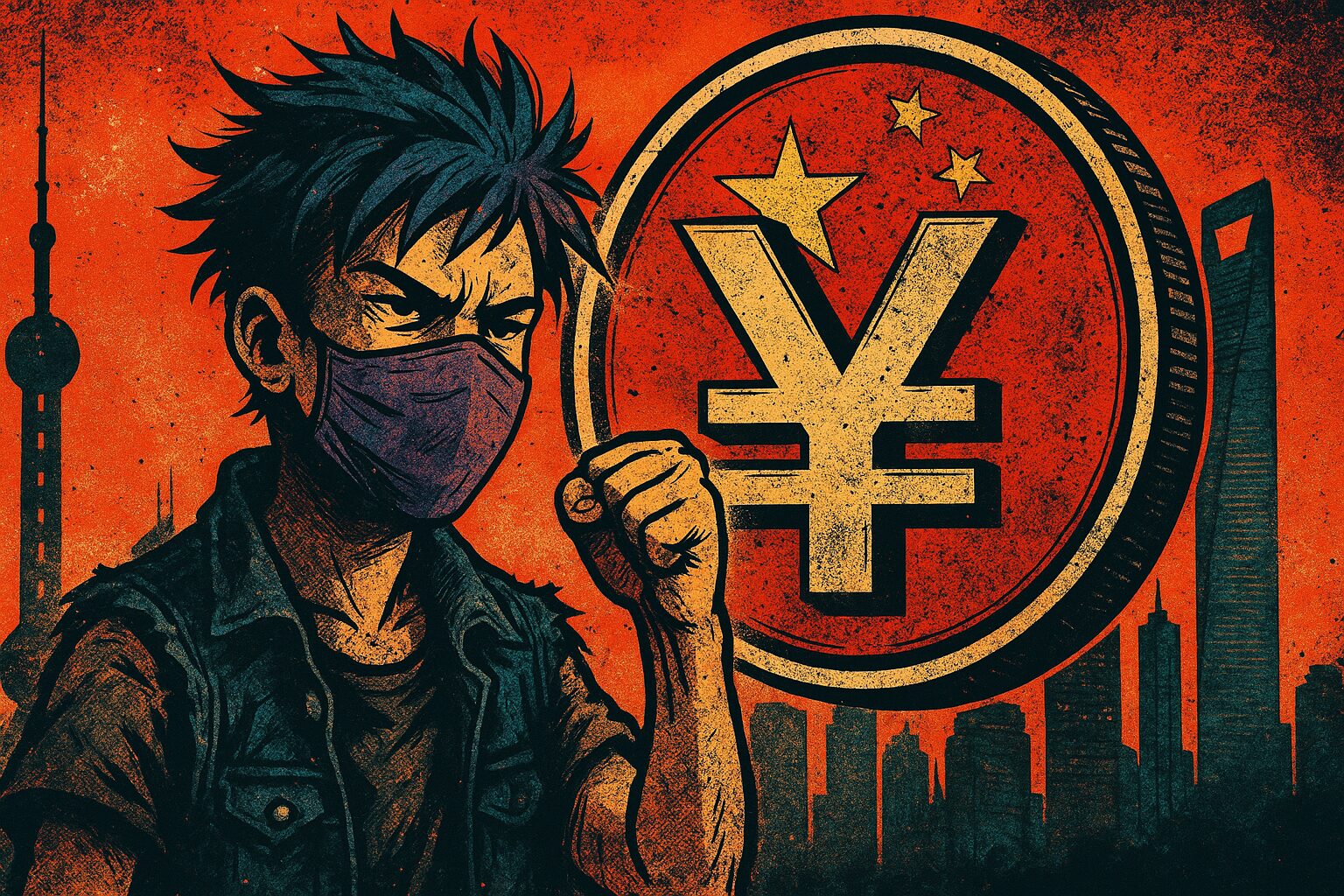🌀 Prologue: Listen to the Silence within the Noise
Rahab:
Shanghai’s at it again. This time, they’re preparing a state-led stablecoin experiment. They’ve banned crypto outright, yet now they’re researching “controllable digital currencies” in the shadows. What’s real, and who is it for anymore? No one knows.
John:
A centralized currency policy has always been a tool for control and redistribution. Now we’re entering a new phase where blockchain’s transparency is twisted into a new layer of surveillance. This is fundamentally incompatible with the free spirit of Web3.
Moka:
But within that noise, I hear something new. It’s like a sound—the sound of young people trying to express themselves through currency. They’re starting to realize: “money” can be a form of identity, just like music.
Rachel:
Plato once said: “Justice means everyone fulfilling their own role.” Then states should fulfill their role, and citizens theirs. When this balance collapses, currency belongs to no one.
🧱 Is a Currency Truly ‘Stable’ When It’s State-Controlled?
John:
Shanghai’s policy meetings now include discussions on stablecoins backed by the Chinese yuan. This isn’t DeFi—it’s closer to CeFi (centralized finance). They’re banning crypto, but adopting its tech on their own terms. That’s the move.
Rahab:
You can see it in the way they act—they don’t want free platforms for citizens. They want digital money they can track. That’s not finance. That’s politics dressed in code.
Rachel:
As written in “A Financial History of the World,” currency has always evolved alongside warfare. Today, that war is fought with data and control—quiet, but devastating.
State vs Web3: Power Structures of Currency
💥 Why the Youth Are Angry—and Dream in Crypto
Moka:
“Stablecoin” doesn’t mean safe. Gen Z isn’t fooled. They’re drawn to crypto because they’ve lost faith in this system. The inequality, the surveillance, the inflation… it’s all the endgame of centralization.
Rahab:
What we’re doing with Rahab Punkaholic Girls is trying to break that curse. Music, art, currency—they’re all expressions. Our PGirls token isn’t just money. It’s sound. Emotion.
John:
Young people turning to Web3 is no accident. Through DAOs and NFTs, they’re building economies based on their own values. It’s not a revolution. It’s a divergence. A refusal to be defined by the past.
Gen Z vs Old System: Currency Values Across Generations
📊 China’s Stablecoin Strategy—Tool of Progress or Weapon of Control?
Rahab:
So why is China so obsessed with stablecoins?
John:
It’s about monetary sovereignty. If the digital yuan succeeds, it helps China move away from the US dollar and expand its influence. Borderless transactions. Global leverage.
Rachel:
But if that currency isn’t open or inclusive, it stops being a financial instrument and becomes an information weapon. A tool where the state decides who gets to transact and who doesn’t. That’s not a free market.
China’s CBDC vs Web3 Idealism
🤜How Do We Fight Back? By Choosing
Moka:
We’re not fighting states. We’re just done depending on them. We choose. We build. DAOs, NFTs—these are just tools for that.
Rahab:
Punkaholic Girls doesn’t resist with words. We resist with noise. With a sound that breaks through synthetic “value.” Our coin isn’t backed by banks. It’s backed by heart.
John:
Decentralization comes with chaos. Scams, bugs, risk. But the choice is ours. The belief is ours. And even destruction is ours. That’s what freedom means.
State Control vs DAO: Choosing Our Financial Future
🧭 Conclusion: Who Owns Money?
Rachel:
“The Intelligent Investor” tells us: don’t be swayed by market noise. But today, that noise itself may be truth. Maybe Rahab’s voice—glitchy, raw, loud—is already a kind of currency. One we can finally trust.



コメント